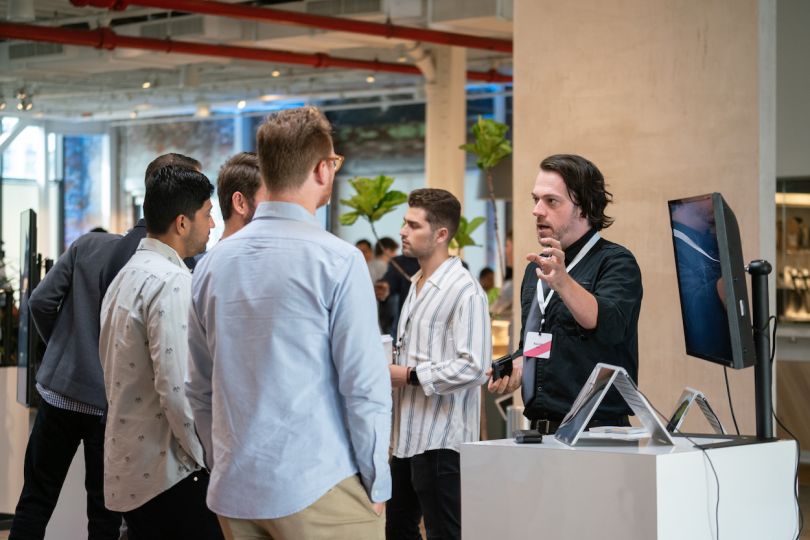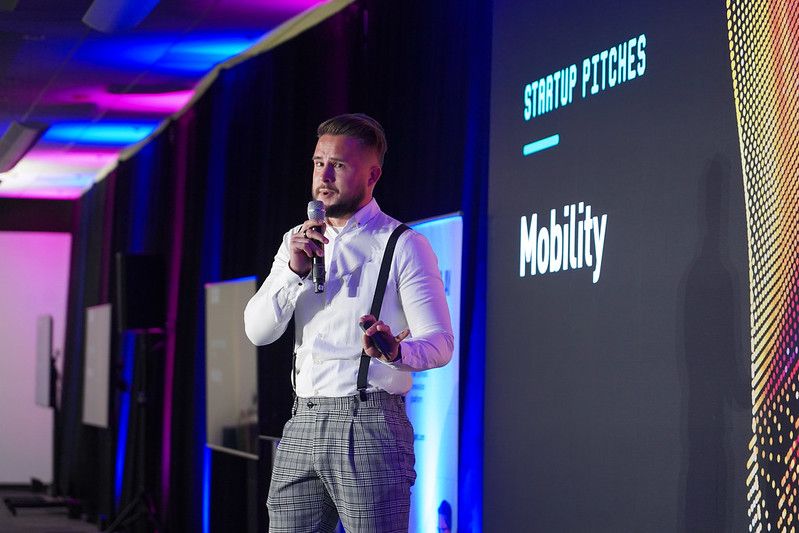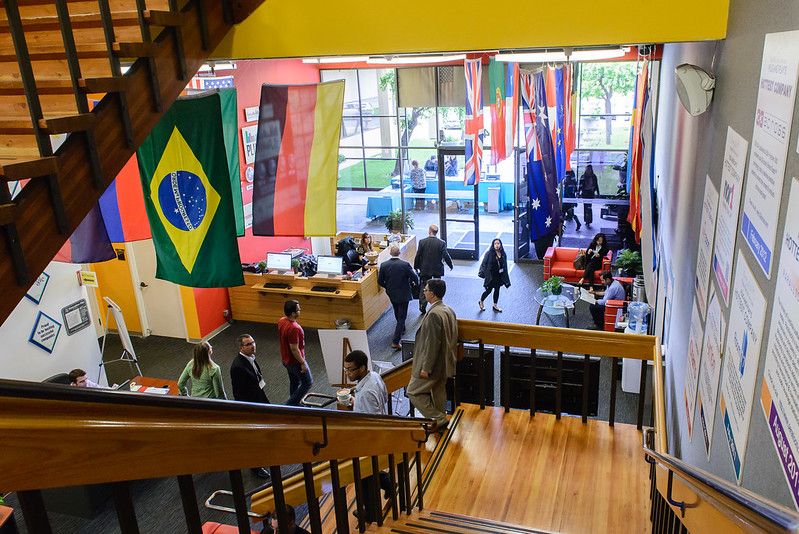In 30 years, 68 percent of the world’s population will live in cities, according to the United Nations. That’s a lot of people. And, as we’ve seen in fast-growing cities like San Francisco and Austin, an influx of people can create an influx of problems — like congested roads, strained infrastructure and rising pollution levels.
In all likelihood, future cities will have fewer cars on the road, leaning instead toward so-called mobility solutions like bicycle paths, mass transit and — one day — autonomous ride-sharing vehicles. So why are legacy car companies supporting future city accelerators that incubate the very products and ideas angling to replace them?
Criss-crossed by roads and hewn by highways, our cities were built for the cars that crowd them. As future cities take shape, however, it’s car companies that must adapt — and they want to be ready.

Studying mobility challenges in today’s cities
Mobility doesn’t exist in a vacuum — its quality is inextricably tied to city-specific factors like real estate, infrastructure and energy.
That’s why Ford has taken a unique tack with its alt-accelerator, City:One Challenge.
For City:One, Ford selects a city, researches its transportation challenges and invites startups and other organizations to pitch solutions — it gets around 1,200 for each city. Then, it chooses about a dozen finalists to create pilot proposals, the best of which receive up to $100,000 for on-the-ground testing. Some winners also get to pitch their ideas to other groups at Ford.
The program has run in seven cities so far, including Austin, Indianapolis, Mexico City and, most recently, Detroit. The winning concepts in Detroit were announced at the end of January and include mobility hubs where pedestrians can stop for information and amenities, a public art and street furniture project for the Michigan Avenue Bridge and a regionalized WayFinder app for people with disabilities.
“It’s very helpful for us because the challenges faced by a city like Mexico City may be faced by other cities in the future.”
Through City:One, local governments and organizations get to clearly communicate their pain points and weigh in on potential solutions, Ford’s head of city solutions Jeff Jones said. Sometimes, winning startups will even have roots in the community, and their familiarity with the issues helps them better tailor their products.
“One of the challenges that we have as we move [Ford] through this shift — from traditional transportation on four wheels into mobility that moves everywhere — is that a lot of these technologies are new. And while you can test them in simulated environments like [Mcity in] Ann Arbor or American Center of Mobility, they really don’t have the community as part of it,” Jones said.
City:One helps bridge that gap. In Detroit, for example, Ford is spending $740 million to restore the defunct Michigan Central Station and create a hub for future city innovation. There, entrepreneurs will work alongside local leaders on ideas surrounding mobility, co-housing and connected infrastructure.
Ideally, all parties benefit. Citizens get from Point A to Point B easier, startups walk away with proofs of concept and Ford builds an in-depth understanding of cities and their transportation needs — now and later.
“It’s very helpful for us because the challenges faced by a city like Mexico City may be faced by other cities in the future. So as we look at solutions, we’re able to then apply them to the extent we can in other cities,” Jones said. “It also helps us understand what can happen in a really congested city versus a less dense city as they evolve and the congestion takes different growth patterns.”

Learning From Leaner Companies
To state the obvious: responding effectively to large-scale transportation challenges is hard. But some car companies have done it before.
In 1956, the Suez Crisis and fuel rations in London created the need for a smaller, fuel-efficient alternative to the gas-guzzlers that filled the city’s streets. English-Greek car designer Sir Alec Issogonis responded with the design that would become the Mini, complete with front wheel drive and a transverse engine.
Designed for city driving, the Mini paved the way for other compact cars, and it remains the most popular British car ever made.
Today, Mini is a subsidiary of BMW Group. Along with venture fund Urban Us, the carmaker runs the Brooklyn-based accelerator Urban-X, which supports entrepreneurs not too different from the Mini’s own creator.
“Alec Issogonis sat four people down on the floor in his workshop, and they built a box around him. That’s how you got this very creative use of space that Mini has been known for,” Urban-X managing director Micah Kotch said. “There was a focus on a very specific urban problem, and they challenged the status quo.”
Kotch, employed by Mini, oversees operations at Urban-X, a 20-week accelerator for startups in the future city space. It gets about 600 applications for the 10 slots in each cohort, as founders compete for access to 2,000 affiliated mentors and six experts-in-residence. Finalists receive 1,000 hours of coaching on customer acquisition, product development and fundraising.
Urban-X also makes a $150,000 initial investment in each concept in exchange for equity, debt or safe notes, which are agreements for future equity. Graduates of the program include short-term lease startup Borrow, construction tech startup Toggle and connected city startup Numina.
The perks for participating startups are clear. But there are benefits for Mini, as well. Startup equity could turn into cash if one of Urban-X’s portfolio companies goes public or sells to a larger entity. But car companies, or original equipment manufacturers (OEMs), can also benefit by becoming customers of the startups they advise.
“Collaborating with startups is a faster path to get innovation as part of the supply chain.”
Take Lunewave, a graduate of Urban-X and the first company to move on to BMW’s Startup Garage venture client program, in which BMW becomes an early adopter of a startup’s automotive technology.
Lunewave makes radar and sensor technology for autonomous vehicles, which, by reducing accidents and facilitating more shared rides, may play an important role in shaping how we navigate future cities.
Developed by millimeter wave specialist Hao Xin at the University of Arizona, the company’s radar sensor system is smaller and less expensive than existing solutions — which can cost OEMs up to $25,000 per vehicle. It also works better in poor weather than other systems, Kotch said, which addresses one of the biggest hurdles to autonomous vehicle rollout.
“[Collaborating with startups] is a faster path to get innovation as part of the supply chain,” Kotch said.
Through its deal with Lunewave, BMW got a jump on implementing technology essential for autonomous vehicle development. Later, it made a seed investment in the startup through its venture arm, i Ventures. Results like those are the primary benefits of running Urban-X, but there are secondary ones as well.
As Mini executives spend time with the startups, Kotch said, the lean, agile methodologies typical of young companies starts to rub off. Second, the program has helped attract and retain talent. And third, the hands-on involvement with mobility solutions that could positively impact climate change is a good look — not to mention a step in the right direction — for an automaker.
“Actively working to help entrepreneurs who are engaged in this climate fight, which I would argue is our generational challenge, creates some real brand affinity benefits,” Kotch said.

Accelerators are helping automakers stay relevant
Urban-X has one carmaker as a sponsor. But other accelerators, like global program Plug and Play, have many.
Plug and Play has 25 locations around the world and a list of graduates that includes Dropbox, PayPal and the aforementioned Lunewave. It doesn’t take equity in participating companies. Instead, it makes money from investments and from membership fees from its nearly 400 corporate partners, which include Mercedes-Benz, Nissan, Ford, Hyundai, Toyota Financial Services, Mitsubishi Electric, SAIC Motor and Porsche.
The presence of so many different OEMs puts some healthy pressure on startups and corporate partners alike, said Sobhan Khani, Plug and Play’s vice president. Khani runs the accelerator’s mobility programs worldwide.
“We tell [the OEMs] that the real competition is not between Mercedes and BMW, for example. It’s between old car companies and the new incoming OEMs like Tesla, like Byton,” he said. “[Plug and Play is] actually a good environment because it creates that urgency. We always tell [OEMs], it’s not about who you meet through these platforms. It’s what you do with the startups that makes a difference.”
Daimler, owner of Mercedes-Benz, is a prime example. The company had been involved with Plug and Play for three years when it sent some of its board members to visit the accelerator’s Silicon Valley location. The visitors were so impressed with the startups — some even invested out of pocket — they wanted to show the innovations to their engineers back in Germany.
Rather than fly engineers to California, Daimler requested Plug and Play launch an accelerator in Stuttgart, which it did. When the program held events or showcases, hundreds of Daimler engineers would show up to see new technology up close.
“They’re trying to find a collaborative model to make their products and services more innovative and not become the next Nokia.”
Today, Daimler’s relationship with Plug and Play startups has led to 150 pilot projects and 15 technology implementations in the company’s cars. One of those is what3words, an application that assigns a three-word address to each three-meter square in the entire world — the address “planet.inches.most” would lead you to the Statue of Liberty, for example. This makes it easier to navigate in foreign countries or find someplace without an address, like your tent at a festival.
The startup has also partnered with Ford, India’s Tata Motors and Land Rover.
“Big automotive companies have a lot of resources and talent,” Khani said. “But since the industry is changing significantly, at some point they realize there are so many smart people outside of their company, and they are embracing innovation and working with startups. They’re trying to find a collaborative model to make their products and services more innovative and not become the next Nokia.”
Despite a rapidly evolving industry and staggering production volumes, some carmakers are making this collaborative model work. And tiny mobility startups have something to learn from their large customers’ tenacity, said Lunewave CEO John Xin.
“As we’ve engaged with more and more of the OEM customers, I’ve started to have a true appreciation of the quality that’s demanded when you go from making hundreds of units to millions of units,” he said. “What it takes, from designing to assembling to getting new suppliers to getting new components, it’s just so complex.”

Imagining mobility in the future
Overall, legacy car companies sponsor accelerators for the same reason any company does: to make money, discover new tech and find top talent.
But, ideally, future cities and their citizens will be the ones to benefit. As established automakers soak up new ideas, their influence inches the industry toward more sustainable, equitable solutions.
And what will those solutions look like? Our interviewees gave their best guesses.
Kotch imagines a wide variety of vehicle models that deliver personalized experiences to users as they travel. Khani considers a future where tech companies like Google or Sony become ride-share providers, covering the cost of trips by showing marketing content during the ride. Xin anticipates a world where advanced driver assistance systems and self-driving technology make traveling by car less dangerous.
Jones’ vision, by contrast, is simple: “I hope to see the freedom of choice to move through the transportation system in the way that makes the most sense for the individual at a given time.”
A lofty goal — but perhaps not an impossible one.




